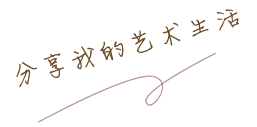从绘画语言出发的当代艺术
唐华伟
认知
作为一个以“当代艺术家”的名义从事艺术创作的画者,面对画布必须对什么是“艺术”,什么是“当代艺术”要有足够深入的思考。这个不断思辨的过程是构建一个艺术家的认知体系的基础。意识形态决定行为方式。持有什么样的认知体系与价值观念决定一个艺术家选择什么样的艺术道路,最终成为何种类型的艺术家。
首先来谈谈对艺术价值的认知。
艺术作品所产生的精神境界的高度决定了艺术的价值层次,我们可以将它分为三个层级:第一层的艺术境界最浅,这个层次的艺术作品停留在对自然物象的摹写阶段,是用直观感觉和相对独立的思维来反映现实的“物”,这样的作品虽然也用到了一定技术手段来实现表达的意图,但主要特点是状“物”;第二层艺术境界是联想,它是用联系的观点、整体的思维方式来反映“物”之间的关系;第三层亦为最高的艺术境界,它是用理性的、辩证的观点来反映事物的内在规律,这样的作品往往能够超越时间与空间的局限,并不停留在特指某人、某事、某物的阶段,它所形成的精神品格具有普世性,甚至能够成为整个人类文明的基石。
这种对艺术价值的认知方法基本上来源于以现代人的思维方式并结合以哲学为基础的观察方法与思辨方法,在某种角度上与中国古人对艺术作品的品级分类非常接近——根据作品艺术价值的大小,将艺术作品依次分为“逸品、神品、妙品、能品”四个品级。“能品”大致相当于上面所述的第一个层级,“妙品”对应第二层级,“神品”与“逸品”大致可以对应第三层级。古人评画家则有“天赋型”“才情型”“学者型”“技术型”,让人一目了然,高下立辨。在艺术价值的品评上,古人与今人虽然在认知时秉持的工具不一样,但认知的结果神似。
再谈谈对当代艺术的认知。
什么是“当代艺术”?当然这是个庞大的话题,对于这个问题已有许多著述,在此不必做长篇累牍,在这里只根据需要从几个角度做简要叙述。
“当代”首先是个时间的概念,从词义上来讲就是当下,是“现在进行时”。从广义上来讲,所有活在当下的艺术家所产生的艺术都可以叫“当代艺术”。但站在专业的角度并以艺术史来划分,我们经常提到的“当代艺术”一般是指狭义上的“当代艺术”。这个狭义的“当代艺术”就是指区别于传统艺术(姑且将现代艺术之前的艺术简称为传统艺术)、现代艺术、后现代艺术的艺术形态,它往往与当代社会背景紧密相连,能够传达当下人文气息,负载时代精神。
在当下,当代艺术的媒介与实施手段相当丰富——包含绘画、影像、装置、行为,等等。创作者切入当代艺术领域的方式亦多种多样,甚至有些理论家提出“人人都是艺术家”。总的来讲,当代艺术不管采用何种方式方法呈现出来,其本身仍带有现代艺术的规律特征——一旦成为经典即成为历史,它的历史使命亦随即完成,此时的艺术史随之又增添一段新的文本。该文本还有可能进入学院的教科书,成为教学与研究的标本。有句话将这个规律特征描述得非常形象:现代艺术像竹子开花,一开花便死。
因此,当代艺术是动态的,它的面孔永远随着时代的更迭不断变换新模样。万变不离其宗,当代艺术的外在模样虽然常变常新,而其内在规律仍有迹可循——真正伟大的当代艺术富于智慧与创造力,能够开启民众的心智,引领潮流,与同时代并存的伟大科学发明一道,水乳交融,不但推动时代的巨轮,还扮演着拓展人类文明边际的重要角色。
既然当代艺术是不断创新的,那么它的一个重要特征肯定是不重复过去。假如一个艺术家仍沿用传统的方法与传统的观看方式制作作品的话,这样的作品不管你是采用何种媒介、材料生产出来的,显然都不能称之为“当代艺术”。再假如一个艺术家将已成立的当代艺术尤其是已写入艺术史的当代艺术作为一种样式来加以模仿,其行为不但说明制作者本人的无知与无节操,而且在艺术上毫无意义,此举即便在技术上模仿得再好,也仅仅只能获得一个“高级抄书工”的工匠型荣誉,而无缘于真正的“当代艺术家”称号。基于这一点,作为仍操持油画工具生产作品的当代艺术家,应该比传统型油画家更需要了解传统。
不知“旧”,焉知“新”。因为只有懂得什么是传统,才能懂得什么是真正的创新,才有可能具备丰富的想象力与创造力。
因此,一个以架上绘画为媒介的当代艺术家必须对“传统”做系统的梳理,不管是远一点的传统(如古典艺术),还是近一点的传统(如现代艺术、后现代艺术甚或已成立的当代艺术),都要有相当深入的认知度。这个“认知度”能够有力地保证一个艺术家是在有知的前提下进行创造发明,而且还将帮助一个真正有志于当代艺术的艺术家在整个艺术生态体系中做适合自身特点的精准定位,并以清晰的艺术史为线索和严谨的逻辑关系设定自己的前行目标。
功课
做功课是提高认知水平的重要途径,这是常识。
功课这个词,现在一般用来指学生学习的课程安排,做功课的意思基本等同做作业。追本溯源,其实“功课”一词源于佛家。按照佛教规定,每个信众每天都要做功课,就好像学生每天要完成的作业一样,专指佛教寺院定时念持经咒、礼拜三宝和梵呗歌赞等法事活动,因此成为“功课”。功课是佛教信众日常最基本的宗教修行,每天早晚必须进行。做功课让佛教徒在思想认知上融入佛的理念,潜移默化,构建以佛教价值观为世界观的认知体系,同时做功课又作为一项身体力行的实践活动,让佛教徒在行为上保持着一种身心清净、修身养性的生活方式,最终帮助佛教徒达到修行的最高境界。
同此理,作为一个有志于当代艺术并有所追求的艺术家,要想在艺术上达到最高境界,同样不可缺失属于当代艺术家的“功课”。艺术家平时做功课所形成的厚度与维度乃是通往艺术圣殿的阶梯,最终决定了一个艺术家未来在艺术上的高度。
既然做功课不可或缺,那么当代艺术家应该做哪些功课?又应该怎样去做功课呢?
让我们先看看功课的内容。诚然,当代艺术家的功课也总是离不开认知与实践两个方面。接受教育,阅读书籍,观看展览等这些行为有助于认知,勤于思考也有助于认知,古人讲“读万卷书,行万里路”,说的就是提高认知水平的方法,也可以说是做“认知”的功课。因此,阅读、观看、思辨是属于“认知”的功课,是艺术家“参禅悟道”的方式。此外,艺术家是艺术作品的生产者,这一属性决定了他不是一个纯以思辨为主的理论家,他必须是一个以艺术作品说话的实践者,仅仅勤于“做思想的体操”还不够,因为,“认知”通过“实践”才能深入,才能找到合适的载体呈现出来。所以,“拳不离手,曲不离口”,长年累月的实践也是艺术家功课的一部分。作为一个操画笔为生的当代艺术家,他的实践类功课显然就是多画,因为所有的“认知”最终都要通过绘画作品来实现。尤其是以绘画语言为载体的当代艺术家,更加要通过做功课养成用“画布”来思考问题的习惯。古人讲“废画三千”,说明了画家做实践功课的程度。没有“废画三千”就产生不了“神乎其技”,更谈不上“技近乎道”。只有在实践中不断渐进思考才能探赜钩深,找到“测幽微,穷神变”的办法,确保向“尽精微,致广大”的方向前行。如此这般,作为一个当代艺术家的画者才能寻找到前人未能企及的路径,从而在“大艺术”的平台上构建有别于前人的绘画语言,成为一个别开生面真正从“绘画语言”出发的当代艺术家。
由此看来,实践没有深入,认知水平最终也上不去,这两个方面是相互裹挟着交替上升的。功课的厚度积累得不够,很难出好作品。关于这一点,我们看一个展览下来就有所体悟。通常,“认知”功课做得不够者画品上不去,“实践”功课做得不够者由于绘画语言贫瘠而作品画面气息单薄,容易沦为简单的说教。就我个人而言,我讨厌的当代艺术不外乎这几种类型:故弄玄虚装腔作势型、扮鬼吓人博人眼球型、审美扁平流于说教型、缺乏智慧为了创新而创新型。这几种“当代艺术”一般都是不愿意老老实实地做功课,老想依靠投机手段走捷径的艺术家生产的。好的当代艺术往往带有以下特点:或许能够开启人的心智以触发一种前所未有的新的思维方式,或许拓宽我们观看这个世界的视野,或许提供超出传统审美愉悦的视觉体验,或许以独特的语言方式震撼人的心灵,如此等等。
积健为雄
功课的作用有目共睹。武术家的功课直接就叫“功夫”,功夫的修炼助武术家打通“任督二脉”,步入“无招胜有招”的自由境界。同样,艺术家的功课也助他进入“无法而法”的自由境界。
对于我来说,经年累月的功课使我习惯于用绘画语言作为我的表达方式,如同佛教徒“晨钟暮鼓”般修行,我很享受这个过程。南海先生康有为说“做学问要只求耕耘,不问收获”,说的是学习的态度与快乐,孔子云“学而无乐,不能谓之学”,也是说学习的乐趣,于此,我深有同感。安安静静,心无旁骛地做功课是我最惬意的时刻。做功课这一过程让我与遥远的“我”展开对话,让我的“心”找到安放之处,并且通过“思想的体操”深潜至我的内心世界,让我不断发现“技与艺”之间的秘密,认清个性化语言与公共语言之间的关系,不但为构建独立与独特的自我“语言体系”找到门径,而且还点点滴滴不断地丰富着这个“语言体系”的词汇量。
《宣和画谱》载:胸中渭川千亩,气压十万丈夫。试想一下,如果没有平时功课的点滴积累,胸中哪来的“渭川千亩”,又何来产生气压十万丈夫的英雄气概?
“积健为雄”,这个句子为此做出了最准确的诠释。很幸运,能够让我陶醉于快乐的绘画语言世界里,夫复何言?至于其他收获,我相信水到渠成、瓜熟蒂落自有定数。
“超以象外,得其环中”。历经二十多年的艺术生涯,“功课”已不知不觉地像吃饭睡觉一样重要,早已悄然成为我的生活方式,融入我的血液,成为我生命的一部分。
嬗变
许多当代艺术家不是从走上艺术道路一开始就直接进入当代艺术领域,他们的艺术生涯通常经历过“传统”时期。这个现象在中国更为普遍,因为中国的当代艺术家大多接受过传统的学院教育,都有着从“传统”到“当代”的蜕变过程。说到学院教育,我有这样的体会:当下,虽然当代艺术的重心不在学院,而且很多人质疑我们的学院教育,但不可否认,学院教育的作用仍然不可抹杀。因为,学院教你读书识字、遣词造句,教会你能操持基本的公共语言进行艺术体验,引领你步入艺术殿堂。可是,你能否在此基础上构建自己的认知体系与语言方式,形成创造力,成为一个真正的当代艺术家,那还取决于你个人的禀赋与修为。
其实从“创造力”这个意义上来说,不管你是谁,不管你是什么身份,在发明创造面前人人平等,人人都有机会。我们可以用一个现象来说明这个情况:我们常常看到许多重量级身份的学院画家的作品了无新意,枯燥乏味,其原因是他们背负了太多的学院包袱,虽有调动各种社会资源的能力帮忙,但行动起来却畏首畏尾,在艺术上“清零”的能力很弱,缺乏创造力;反而一些体制外的艺术家和一些年轻艺术家能够轻装上阵,做出来的作品令人耳目一新,生机勃勃。所以,“英雄不问出处”“条条大路通罗马”。只要你拥有足够的信心,加上足够强大到轻易不被别人吞噬的生命力,再加上有足够厚实的“功课”垫底,想在当代艺术领域里闯出属于自己的一片天地,完全可能实现。
作为一个中国当代艺术家,我的艺术生涯与许多中国当代艺术家有类似的经历。我的艺术事业轨迹基本可以这样展开:早期接受学院教育,此后一段时间以传统的审美观念与观看方式从事油画创作。随后,由于近十多年来社会形态的递嬗加之不断受到当代艺术的影响,我的观念渐渐发生变化,不再满足于做一个传统型的油画家。观念变则行为变,没有“舍”,哪有“得”?我在十年前拿出破釜沉舟的勇气,打破已端了多年且收益不错的“饭碗”,做了一次“清零”行动,旨在重新选择艺术道路,重新建立认知体系和语言方式。还好,天道酬勤,十多年的功课形成的厚度使我感到欣慰。我为我当时的勇气击掌。以前不理解达摩十年面壁将影子深深地嵌入石壁中这一举动,现在看来,“悟道”,本该如此。
回望一下,我这十多年的功课很难说没有做过无用功,或者说没有走过弯路。有些阶段的实验性作品现在看起来想法很幼稚,语言也很单薄,但是将时光退回到彼时回想一下,这些作品彼时可能是为做某一方面的探究而做的功课,依着彼时的逻辑业已收获了一份惊喜。从这个角度来看,做功课没有弯路与直路,没有无用与有用之分,形成的结果都是有益的。
我早年师从于冯法祀先生。冯法祀先生是一个令人尊敬的老油画家,他这一生学到老画到老,完全尊重自己的内心感受,做了一辈子的功课,不计得失,快乐地活在他自己的艺术世界里。这一点我与他非常相似,也可以说,完全受他的影响。作为冯法祀先生的学生,常常会面对很多同人提出的这样一个问题:你怎样传承冯先生的艺术?你有这样的条件怎么不继续走冯先生的路子而转向当代艺术?我是这样理解这个问题的,借此文一并作答。我认为,最好的传承方式是传承冯先生视艺术为生命的精神,要成为他精神“衣钵”的继承者,而不仅仅是绘画技法的继承者。在冯先生的那个时代,他用他掌握的油画语言创作的作品,无论是形式还是内容,均对应了他所处的那个时代的因果关系,与当时的社会、人文背景紧密相连,气息相通,符合那个时代的精神。因此,可以这样说,他是那个时代的 “当代艺术家”,他在艺术上的贡献已载入美术史。跟随老师的学习经历使我打下了公共语言的基础,掌握了一些学习方法与工作方法,从而走上艺术道路,但是有句谚语讲得好:师傅领进门,修行靠个人。当下,我如果仍沿用老师的语言方式画画,不思创新,恐怕在艺术上难有建树,即便画得再熟练,也顶多成为一个在油画语言里夹杂着俄罗斯腔调的宣传画画家。
幸运加努力,当年的“清零”与十几年的功课修为,助我完成了从一个传统型油画家向当代艺术家的嬗变。
画大画如烹小鲜
“画大画如烹小鲜”是我在艺术创作时所奉行的态度,也可以说是我在画画时形成的心得体会。这句话的表述方式借鉴自“治大国若烹小鲜”。大家都知道,烹小鲜(或者煎鱼)重要的方法是不能多加搅动,多搅动则鱼肉易烂。古人讲“治大国若烹小鲜”有两层意思:一是国君治理国家最忌讳治国方针左右摇摆不定;二是要求国君治理国家时保持良好的心态——举重若轻,就像烹小鲜一样从容不迫,游刃有余,火候拿捏得当,恰到好处。
说到烹饪,醉心于厨艺的朋友都有这样的体会:煎鱼时锅中释放出的香气,煎至恰到好处的色泽,甚至煎鱼时发出的“嗞嗞”声响,都令人心驰神往。当然,光有美好的过程还不足以成全这一场欢喜,因为过程的愉悦更期待结果的可爱——一个“鲜”字代表烹饪结果的成功,如果做出来的这锅鱼不鲜、不可口,那就意味着这次烹小鲜的活动失败了。因为只有“鲜”才能贴近生命的真味,让品尝者余香满口,从肉体到精神都得到极大的满足。此一认知如果非要用哲学方式拽文来叙述:将鱼“断生”(也就是做熟了),是为了满足肉身的基本需要,是“形而下”;那么将一锅鱼做得鲜美动人,让人尝后回味无穷,就不仅仅是“治疗饥饿”,此时的厨艺已然具有精神性,可以说是“形而上”。凡事道理皆相通,治大国如此,烹小鲜如此,画大画亦如此。我的“画大画如烹小鲜”由此引申而来,也包含两层意思:一是指我画画时喜欢保持放松、投入的身心状态,优游在物我两忘、自由驰骋的精神世界里,从容不迫地享受绘画的过程;二是指我画画不喜欢翻来覆去繁复的制作方法。快意书写,直抒胸臆,“宁可笔笔误,也要笔笔真”,在画布上形成闪转腾挪、阴阳顿挫的行动痕迹是我选择的表达方式。此外,如烹小鲜一样,画一张画的火候也要恰到好处,用力适可而止,最后的画面要定格在“鲜”的状态。因为只有这个“鲜”,才能体现生命的本真,才能具有强劲的精神指向,才能上升至“形而上”的高度。在我看来,过于熟腻的制作手段只会令人生厌,劳动密集型的作品至多停留在“能品”阶段,其艺术品格与高层次的品级无缘。
另外插一句,画幅大小本身也是一种表达方式——虽然画不以大小论好坏。有些艺术家爱画小画,有些艺术家则爱画大画,这个选择取决于各自的语言方式,适合自己就好。至于我,画大画让我更过瘾,更加能够让我汪洋恣肆地释放创作激情。这一点与我听音乐的习惯相似——必须要有足够大的音量与足够宽足够深的音场才能满足我的聆听需要,才能让我全方位地沉醉其中,去感受音乐作品“日月之行,若出其里,星汉灿烂,若出其中”的魅力。
我的画
画由心生。我的画也不例外——随着观念的改变与认知的深入还有功课的积累不断进化。
我的画早期基本以传统写实面目出现,创作题材以风景为主。近年观念的改变促使我尝试多种题材与表现形式。“十年磨一剑”让我逐渐找到契合自我个性特征的表达方式,这个潜修的过程可以说是从“传统”到“当代”的过渡。虽说是“过渡”,这段时间还是收获了以下几个系列的作品:“身体”系列、“消逝的风景”系列、“面孔”系列。这几个系列作品从内容到形式皆对应那个阶段的认知度与实践程度。以我现在的眼光,审慎地来看这些作品,大致可以这样概括——在绘画语言上有所探索,样式上也有所创新,而且作品里面有一些很精彩的东西,至今让我心动不已,但是基本上,画面的言说方式还是在“叙事”的架构中,没有完全摆脱“传统”的框框。当然,不能否认,这个阶段的作品对我来说依然十分重要,因为没有这几个系列作品的功课垫底就产生不了我当下的状态。
十年弹指一挥间。当时光的年轮走到2013年,我的艺术生涯步入新的阶段。
认知的通透与实践的深入促使我的绘画语言在我的画里独立出来,变得更加纯粹,不再依靠“叙事”,而是直接指向精神,在仍然尊重公共语言的基础上确立了完全属于我个人的个性化语言,从绘画语言出发切入到当代艺术领域,并向前继续开辟新的空间。我现阶段的作品,用语言重构秩序,进入“造物”的自由状态。虽然画面还保留具象内容(并非抽象画),有些作品还以“风景画”呈现,但此“风景”非彼“风景”,更与传统意义上的风景画截然不同——不是对自然风景的传移模写,而是“造风景”,是内心风景的映像。因此,我画面中制造的“物”并不特指某一物,而是完全源于我的生命体验与我的内心感受,对应的是精神的肖像。另,“造物”的自由并非没有约束,我“造物”的办法用的是造物主同样的办法——“无常形而有常理”。
我作为一个从绘画语言出发的中国当代艺术家,建立独立自主的语言架构,中国传统文化的基因无疑起了决定性的作用,这恰恰也是我有别于西方艺术家的特点——书写性与行动性。方法上我力求在有法与无法之间、理性与感性之间、抽象与具象之间寻求某种平衡;在实践上,我通过材料技法的实验与提炼不断拓展绘画语言的边际,以达到表现的自由与自由的表现状态,最终契合“精神”。为了避免成为玄之又玄、虚无缥缈或者是干瘪的说教,我的画在追求精神性的同时不忽略肉身的存在,因为我知道,肉身不存,精神也无处安放,因此“形而上”与“形而下”也要寻求适度平衡。
画者所有的理念都要依托绘画语言实现在有效载体上才能奏效。
说得具体一点,我的画以画布为载体、油彩为媒介,画刀为主要造型工具。这些材料与传统油画无异,是以西方文化为背景的绘画语言载体。使用这些材料作为造型艺术的实施工具,其视觉上的公共语言一定是以“西方”为基础的,“颠覆”或者“创新”也是以西方艺术史的逻辑关系为线索的。
我的画在画法上与传统油画技法相悖,反其道而行之——从外往里画,利用工具将潜伏在底层的色层与上面的色层搅和在一起,形成不可预知的效果,然后再因势利导顺应着新生发出的画面往下画,行动的过程中整个身体都参与其中,在一呼一吸间释放创作激情并引发出新的精神图景,最后再选择恰当的时机将其固化下来,形成作品。在此说明一下,这些技法不是故意为了创新而创新,完全是为表达的需要而生,是长期功课沉淀下来的自然而然的技术手段,如同一棵树在吸取了足够的营养后自然生长出的枝杈。当然我这棵“艺术树”生长自中国的土壤,“瓤”是中国的,“皮”却穿着西装,也同时得益于西方文化的浇灌。
特别说一下,虽然点、线、面是最基本的视觉语汇,但是“线”于我个人而言具有特殊的意义,是我的绘画语言中最重要的组成部分。我认为能上升至“精神”的“线”应当如是:“如锥画沙”“入木三分”“如屋漏痕”。此视觉经验皆来自自幼长期习练中国书法形成的体认。中国书法的“线”从某种意义上来说,浓缩了中国文化与中国人的智慧,它在中国视觉艺术中具有独立的地位。将中国文化标志性的“线”通过油画技术手段转化至以西方文明为载体的油画语境中,如果视觉上不突兀,不生硬,并与色彩、材料等语言一起“琴瑟和鸣”,生发出秩序严整、妥帖自然的新语言式样,那应该说是绘画语言上的突破,是视觉语言的当代重构。此举乍看似是技术层面的创新,其实这是东西方文化对话形成的结果,是东西方文明这两棵大树有效嫁接后结出来的新品种。此“线”非彼“线”——它已注入新的生命,重新焕发勃勃生机,在艺术上亦赋予了新的意义。
对艺术家而言,绘画语言的当代释放一定与技术背后的观念相关连,或者它本身就已然具有某种观念性,因此我虽然不是个纯观念艺术家,但还是与“观念”脱不了干系。
回望艺术史,艺术家融合东西方文化创造新格局的案例此伏彼起。当下,进入“全球村”的时代,多种文化背景下的“融合”产生新的“观念”的频率则更胜往昔,由此放眼未来,当代艺术的发展亦将永无止境。
“当局者迷,旁观者清”,自己没有品评自己作品的资格。关于我的画,本文主要围绕生产的方法、生产的过程做一点提示性的解释,讲讲为什么要这样生产,在什么背景与条件下用什么工具生产,至于生产的结果还得让观者用眼睛自己去看。过多的关于作品的文字诠释不但有“王婆卖瓜”之嫌,而且还会严重干扰观者的思考与感受,毕竟我的画总归是用眼睛观看的视觉艺术。
在路上
我的画来源于生命的体验,借“物”咏怀,描绘的是人的情感,关照的是人的精神状态与生存状态。因此,只要生命在继续,生活在继续,我的艺术就不会停止!
从这个意义上讲,我的艺术永远在路上,在生命的路上。路上每一处绮丽的风景与每一份感动都会成为我在画布上挥洒的理由,最后凝聚成为我的背影……
Painting Language Oriented Contemporary Art
--My Painting and I
By Tang Huawei
Cognition
As a painter dedicating to artistic creation in the name of “contemporary artist,” one must deeply consider what is “art” and what is “contemporary art” in front of the canvas. The process of endless speculation lays the foundation of an artist’s cognitive system. Ideology decides on one’s behavior. Cognitive system and values determine an artist’s path of career, and the type eventually.
Firstly, we are going to talk about our cognition of artistic value.
The height of spiritual realm generated by an artwork determines its level of artistic value, which can be grouped as three levels: The first level is the lowest, on which the artworks are only copying natural images, and reflecting the real “objects” by visual sense and relatively independent thinking. Such artworks, though being applied with certain technical skills to express, are mainly featured by depicting “things”; The second level emphasizes association, and reflects the relationship between “things” by associated ideas and comprehensive thinking; The third level is the highest, on which rational and speculative ideas are used to reflect the inherent rule of things. Such artworks often go beyond the restrictions of time and space, but never specially target at some people, some things and some objects. Its spirit and character are usually universal, and even become the cornerstone of human civilization.
The cognition towards artistic value is fundamentally originated from modern way of thinking, in combination with philosophy-based way fo observation and speculation. In a sense, it is similar to ancient Chinese classification for artworks, i.e. artworks were classfied into four levels, “Yi (sudden inspiration combines mature skills), Shen (supreme depiction of spirit), Miao (excellent painting skills) and Neng (accurate handling of image depiction),” among which “Neng” basically equals to the first level, “Miao” corresponds to the second level, “Shen” and “Yi” parallel to the third level. Ancient Chinese people classified painters as “genius,” “talented,” “scholastic” and “technical” types, which clearly reveal the different heights to which the painter has reached. Although with different standards, ancient people and modern people share very similar conclusions in reviewing and judging artistic value.
Secondly, we are going to talk about the cognition of contemporary art.
What is “contemporary art?” Certainly, this is a very big topic, on which there have been a large number of writings and publications. So we only briefly discuss it from a few perspectives according to real need.
“Contemporary” is a concept of time at the first place. Literally speaking, it means current, and stands as the “present tense.” In a broad sense, art created by artist living today can be categorized as “contemporary art.” But from the professional perspective of art history, “contemporary art” often mentioned by us usually means the one in a narrow sense. Such “contemporary art” in a narrow sense refers to the art form different from traditional art (all the arts occurred before modern art can be categorized as traditional art), modern art and post-modern art. It is often closely associated with contemporary social context, and able to convey current humanistic characteristics and the spirit of time.
Nowadays, contemporary art has abundant medium and means of practice, including painting, video, installation and behavior. Also, the artists have various accesses into contemporary art field. Some theorists even said “everybody is an artist.” In general, no matter by what method or in which way, contemporary art itself still follows the laws and shares the characteristics of modern art. Once an artwork became a classics, its historical mission is fulfilled, and a new script is added to the art history. The script may also become a part of a textbook of an academy, as a specimen of teaching and research. There is a vivid description of the law: Modern art is just like the bamboo, blooming means dying.
Thus, contemporary art is dynamic, whose appearance always changes with the time. But changes never diverge from the original essence. Although the outside of contemporary art updates with time, its inside always follows the law which can be tracked down. Genuine and great contemporary art is full of wisdom and creativity, and is able to inspire the public, lead the trend, and join hands with scientific inventions in complete harmony, proceeding the times forward and expanding the margin of human civilization.
Since contemporary art is always innovating, it should have an important characteristics, that is it never repeats the past experience. If an artist creates artworks with traditional methods or in the traditional way of observation, such artworks, no matter being made by which medium or materials, will never be called as “contemporary art.” If an artist imitates a genre of contemporary art which has already been established or recorded in art history, such behavior not only proves his/her ignorance and immorality, but also makes no artistic sense. Even if he/she imitates perfectly, only a reputation of “senior imitator” for craftsman will be given to him/her, never the title of “contemporary artist.” Therefore, contemporary artist, still creating with oil painting tools, should know better about tradition than traditional oil painters.
How can a person understand “new” without knowing the “old”? Only knowing well about tradition, one can understand what the true innovation is, and can be equipped with rich imagination and creativity.
So a contemporary artist with shelf painting as his/her media must systematically comb through “tradition,” no matter being ancient tradition (e.g. classical art) or modern tradition (e.g. modern art, post-modern art or established contemporary art), in order to obtain in-depth cognition. Such “cognition” may forcefully ensure an artist create and invent in the informed condition, and will help an artist devoting to contemporary art accurately position him/herself in the artistic eco-system on the basis of his/her own characteristics, set his/her destination, following the art history and strict logical relationship.
Assignment
Doing assignment is an important way to improve one’s cognition, as the common sense suggests.
The term of “assignment” usually refers to the course arrangement for students, and often equals to homework. In retrospect, the term was originated from Buddhism, since the Buddhism requires every believer shall do assignment every day, as students shall do homework every day. Usually the “assignment” refers to Buddhist memorial services at fixed time, such as reciting mantra, worshipping the Three Jewels and chanting Dharma. Doing assignment is the Buddhism believer’s most basic cultivation for every morning and evening. Assignment enables Buddhists receive the idea of Buddhism in thinking and cognition, build the cognitive system featuring Buddhist values as world view, helps Buddhists maintain the quiet and peaceful life style in behavior, and eventually lifts them to the highest realm of Buddhist cultivation.
Similarly, an artist determined to devote him/herself to contemporary art, cannot afford missing “assignments” necessary to contemporary artist, to reach the highest artistic realm. The depth and dimension of artist’s daily assignment constitute the stairs to the temple of art, and will finally determine the height to which an artist can reach in the future.
Now that doing assignment is indispensable, what assignments shall a contemporary artist do? And how to do those assignments?
Let us take a look at the assignments first. Indeed, contemporary artist’s assignments can never be separated from two aspects: cognition and practice. Receiving education, reading books and enjoying exhibitions will benefit cognition, diligent thinking will also do. As ancient Chinese said, “reading ten thousands of books and traveling ten thousands of miles” are the ways to improve the level of cognition, and the assignments to increase “cognition.” Therefore, reading, observation and speculation are assignments for “cognition,” and the way for artists to “understand the law and rules of art.” In addition, artist is the producer of artworks, which determines he/she is not a theorist purely occupied by speculation, but should be a practitioner flashing with his/her artworks. It is far from sufficiency only to be diligent in “mental exercise,” because “cognition” can be deepened only by “practice,” and an appropriate carrier can be found to demonstrate it. Therefore, “boxing cannot be stopped for exercising, singing cannot be suspended for practicing,” so months of and years of practices become a part of an artist’s assignment. As a contemporary artist making his living by painting brush, the said practice obviously refers to painting, since all “cognitions” will be reflected by paintings at last. It is especially true for a contemporary artist with painting language as his carrier, who should do more assignments to foster the habit of thinking on “canvas.” The story of “3,000 abandoned drafts” told by the ancestor perfectly demonstrates the painter’s unintermittent endeavor in practice. Without the “3,000 drafts,” there is no “miraculous skills,” let alone “almost classic skills.” Only progressive thinking in practice can reach in depth and perfection, find out the way to “detect the subtleness and exploit changes,” and ensure the progress to “big deals, small details.” In such a manner, a painter, as a contemporary artist, can gain the access to the untrodden path, create painting language different from their ancestor’s on the “big art” plantform, and become a unique contemporary artist genuinely started from “painting language.”
Thus without in-depth practice, cognition can never be improved. Both of them are closely related and mutually interactive. Insufficient assignments cannot produce good artworks, which is always comprehended better after watching an exhibition. In general, insufficient “cognition” never leads to top quality of painting, and insufficient “practice” results in pale painting language and poor atmosphere, or reduces the painting to simple and mechanical preach. To me, I am disgusting those types of contemporary art: deliberate mistifying ones, intentional eyeball-catching ones, aesthetically flattened preaching ones, overexerted innovation seeking ones without intelligence. The above types of “contemporary art” are usually produced by artists unwilling to devote to hard work, but always seeking for shortcut and speculation. Meanwhile, excellent contemporary art is of the following characteristics: It may inspire or trigger an unprecedented way of thinking, or broaden our horizon, or provide pleasant visual experience beyond traditional taste, or touch our inside with unique expression, etc.
Success Through Persistence
The effect of “assignments” has been witnessed by all. A martial artist’s assignment is directly named as “kung fu,” which helps to unblock “the two channels: Ren and Du,” and to enter into the free realm of “defeating action by inaction” as well.
To me, months of and years of assignments acclimated me to using painting language as my expression. I enjoy the process of practice, like a Buddhist got used to the cultivation from “striking morning bell and evening drum.” As Mr. Kang Youwei, entitled as Nan Hai, said, “Enjoying the ploughing and weeding, instead of focusing on harvest.” This is about the attitude and pleasure in learning. While Confucius said, “Learning is not a true learning without any happiness.” This is about the joy in the process of learning. I share the same feeling as both of the saints do. Doing assignment quietly and attentively is the most enjoyable moment to me. It initiates the dialogue between me and another “me” in the distance, houses my “heart” in peace, goes deep into my inside with the “mental gymnastics,” reveals me with the secrets between “skills and art,” explains the relationship between individualized language and public language, leads me to build a unique and independent “language system,” and enriches the vocabulary of the “system” bit by bit.
As the Xuan He Imperial Collection of Paintings said, “Wei River runs across 1,000 miles in bossom, conquering 100,000 men with the momentum.” Let us imagine, it without the accumulation of daily practices, how came the “1,000-mile Wei River” in bossom, and how came the heroism conquering 100,000 men?
“Succeed through persistence,” perfectly answers the above questions. Fortunately, I could lose myself in the happy world of painting language, what else should I look for? As for the harvest, I believe in the saying “when conditions are ripe, success will come.”
“Going beyond images, getting to know the essences.” In more than two decades of artistic career life, “assignment” has secretly become something equally important as eating and sleeping, a life style and a part of life like the blood flowing in my vein.
Evolution
Many contemporary artists did not enter into the field from the very beginning of their art life, and they have gone through the “traditional” period on their career path. This is a common phenomenon in China, since most of Chinese contemporary artists have receiced traditional academic education, and thus experienced the transformation from “traditional” to “contemporary.” Speaking of academic education, I have the feeling that: Although contemporary art does not focus on academic education, and many are questioning it, it cannot be denied still that its function is unable to be erased. The reason is that the academy teaches you each word and each sentence, usage of basic public language for artistic experience, and leads you into the palace of art. However, whether you could set up your own cognitive system and language system on the basis, develop your own creativity, and become a true contemporary artist, still depend on your personal ability and cultivation.
In terms of “creativity,” no matter who you are or what you are, everybody is equal in the face of invention and creation, since everybody has the opportunity to fulfill it. Here we can explain the idea with a common phenomenon: We often found that many high-ranking academic painters’ works were boring and meaningless, because they are shackled by the academic identity. Although being able to mobilize various social resources, they are often overcautious in action, weak in “zero clearing” in artistic practice and lacking of creativity; On the contrary, the artists outside the system and some young artists, not being troubled by any burden, can refresh us with vigorous works. So we say, “origin does not make a hero” and “every road leads to Rome.” As long as you have sufficient confidence and strong vitality that cannot be defeated by others, together with enough “practices,” you will establish your own arena in the field of contemporary art.
As a Chinese contemporary artist, I have experienced similarly in my career life as many of my counterparts. My art career started from academic education at early years, and followed with oil painting creation based on traditional aesthetic concept and way of observation. Later on, with the influences of changed social formation in the recent decade and contemporary art, my idea gradually changed as a consequence. I was not satisfied to be a traditional oil painter. Behavior changes with idea, and “gain” does not come without “pain.” I threw away the “rice bowl” which I have been using for years and brought me really a lot, with the courage of burning my own boat 10 years ago, and “cleared myself to zero,” in order to choose my career path once again, to re-establish my own cognition and language systems. Fortunately, God helps those who help themselves, and my accumulation from 10-year practices helped me. I rejoiced in my courage. Before that, I did not understand Dharma’s meditation in front of the wall for 10 years; and today, I believe it is a must for “enlightenment.”
In retrospect, the assignments done in the 10 years cannot be free from useless efforts or roundabouts. Some experimental works on certain stages appear naive today, and plain in language. But under the circumstances at that time, these works were done for some explorations and have surprised me according to the reasoning back then. In this aspect, doing assignments are always right and useful, since the result is always beneficial.
I was taught by Mr. Feng Fasi at early ages. He was an old, respectable oil painter, who learned and painted all life long, followed his heart, practiced all the time, and lived happily in artistic world, irrespective of gain and loss. We are similar in those aspects, or say I was influenced by him in those aspects. As Mr. Feng’s student, I was often asked with the questions: How do you inherit Mr. Feng’s art? Why did not you continue with Mr. Feng’s path on such good basis but turn to contemporary art? In this essay, I would share with you my understanding on these questions. I think, the best way to inherit Mr. Feng’s art is to follow his spirit of seeing art as life, and to inherit his “spiritual legacy,” instead of painting skills. In his era, the oil painting languages adopted by him in artworks, no matter in form and content, all correspond to the cause-and-effect relationship at that time, closely relate to the social and humanistic contexts, and meet the spirit of that era. Thus we should say he is the “contemporary artist” of his era, with his artistic contribution being recorded in art history. My study from my teacher laid the solid foundation of public language, provided me with some ways of learning and working, and guided me to my art career. But just as the proverb goes, “The master leads you to water, but cannot force you drink.” Today if I still stuck to my teacher’s painting language without innovation, I can not make progress in artistic pursuit. No matter how skillful I painted in the old way, I can only be a poster painter at the most, using the oil painting languages with Russian characteristics.
With good luck and hard work, the courageous “zero clearing” and over 10 years of practices helped me successfully evolve from a traditional oil painter to a contemporary artist.
Painting Like Cooking
“Painting like cooking” is my current attitude towards artistic creation, and my feeling and experience obtained from painting. The conclusion is borrowed from the saying of “governing a state like cooking a fish.” As everybody knows, the most important tip for cooking fish (or stir-frying fish) is not to turn it frequently, otherwise the fish will be broken into small pieces. The ancient saying has two meanings: Firstly, policy cannot swing frequently in governing a state; Secondly, stable metality is required in governing, i.e. tackling problems in an easy, free and appropriate manner, like cooking fish with properly controlled degree of heating.
Speaking of cooking, people keen about it should have the experience: The pleasant fragrance, color and even the sound of “sizzle” all sound exciting. Of course, the pleasant process itself cannot contribute to the enjoyment, because a good result is still expected. “Good” taste means a successful cooking. If the fish was not delicious and tasty, the cooking is proved to be a failure. Only “delicacy” stays closest to the true taste of life, and greatly satisfies human body and spirit. If the cognition must be described in the philosophical way, “cooking” the fish is to meet the basic need of human body, so it is under-metaphysical; but well-cooked fish with endless aftertaste is not merely to “relieve hunger,” at the moment, the cooking skill is of some “spirituality,” so it is “metaphysical.” Everything has some laws in common behind, like governing a state, like cooking fish, and like painting. That is how the saying of “painting like cooking” derived from. It also delivers two meanings: First, I usually maintain a relaxed and attentive physical and metal state in painting, forget everything, freely travel through the spiritual world and enjoy the process leisurely; Second, I don’t like repeated and overlapped way of painting. Swift and free painting directly speaks the painter’s mind. “Rather painting with genuine strokes, even if it is a wrong way.” By dropping, lifting, turning and jerking brush on canvas, the trails left constitute my way of expression. Additionally, just like cooking, painting should properly handle the degree of strength adopted and be stopped at the “fresh” state, because only the “freshness” represents the truth of life, the spiritual direction and “metaphysical” height. In my eyes, skills you are too familiar with can only breed boredom, and labor-intensive works only stand on the stage of “accurate handling of image depiction,” but have nothing to do with top-level artistic quality.
Furthermore, the size of painting is also a way of expression, but not a standard to judge the quality. Some artists prefer small paintings, while some like big ones. The choice largely depends on the artist’s way of expression, and the best is the most suitable. For me, large painting satisfies my craving, and enables me relieve the flourishing passion for creation. The preference is similar to my taste for music: Only the volume big enough, sound field wide and deep enough can meet my acoustic need, intoxicate me all-roundly, and enchant me with its charm like “shining sun, moon and galaxy.”
My Paintings
One’s painting usually comes from one’s heart. I am not an exception, as my idea changes, cognition goes deep and accumulated assignments progress.
In early days, my paintings appeared as traditional realistic works in early days, and mainly focused on landscapes. In recent years, the already changed ideas stimulated me to experiment on different subject matters and ways of expression. “Ten-year grinding of sword” enabled me find a way of expression, which perfectly fits into my personality. Such a process of cultivation was a transition from “traditional” to “contemporary.” Although it was a “transitional” period, I still finished a couple of series of works, such as “Body” series, “Disappearing Landscape” series and “Face” series. The series of works, in content and form, all correspond to the cognition and practices at that time. In careful review of those works today, I would conclude in this way: Those works demonstrated the exploration in painting language, innovation in style, and some excellent factors, which could touch me in depth until today. But basically, the way of expression was still constrained in the framework of “narration” and “tradition.” Certainly, it cannot be denied that the works finished at that time were still very important to me even today, because today was always born from yesterday, my current maturity should be attributed to the series of works done back then.
Ten years flied by like a snap of fingers. When time went into 2013, I entered into the new period of my art life. Thorough cognition and in-depth practice facilitated my painting language become independence from painting and even pure, free from “narration.” Since then on, my painting language directly targeted at spirit, became more individualized completely on the basis of respecting public language. Starting from the painting language, I switched into contemporary art field and continued to develop new spaces. Currently, I often restructure the language order in my works and enter into the free “modelling” state. Although some figurative elements are still maintained (since they are not abstract works), and some works still take the form of “landscape,” this “landscape” does not equal to that “landscape,” and completely differs from the landscape in traditional sense, because the “landscape” here does not depict natural scenery, but “create scenery” and reflect “internal scenery.” Therefore, the “object” produced by me in the painting does not refer to anything, but stands for my life experience and inner feeling, and corresponds to the portrait of spirit. Additionally, the freedom of “creating object” is not unrestrained at all, since I have adopted the same method as that used by the creator, i.e. “There is no limitation on shape, but always a law behind.”
As a Chinese contemporary artist, I, starting from painting language, established an independent language framework. In the process, traditional Chinese culture undoubtedly played a decisive role, which exactly constitutes my characteristics different from western artists, i.e. handwriting-based painting and action-oriented practice. In method, I tried to strike a balance between with method and without method, sense and sensibility, abstract and figurative; In practice, I went on pushing back the frontier of painting language through experimenting on materials and refining skills, to realize the freedom of expression and free expression, and eventually to fit into the “spirit.” To avoid mysterious, illusory or flat preach, I pursued after spirituality, while not ignored mortal body in painting, because I knew that no where could the spirit dwell on, if body was unavailable. Between “metaphysical” and “under-metaphysical,” a balance should be properly maintained.
To be more specific, canvas is the carrier, paints are medium and painting knife is the main tool for my painting. All of the painter’s ideas can be materialized by an effective carrier with painting language. Same as those used for traditional oil painting, these materials are the carrier of painting language against the background of west culture. Using these materials as the tools in practicing fine art, the visually public language must have based on “western.” Even if there was “overthrow” or “innovation,” they must have followed the logical relationship of western art history as a thread.
Contrary to the traditional oil painting, my works were painted in a different way. They were done from outside to inside, by mixing the colors on the bottom with those on top by some tools, in order to generate the unpredictable effect. And then, conforming to the trend, the newly created scenes were carried on. In the painting process, the whole body was involved, to release the passion in each breath and inspire new spiritual vision, and to freeze each fantastic moment into the artwork. By the way, all these skills were not used deliberately for innovation, but for the need of expression, and they are the spontaneous techniques accumulated in long-term practice, like the naturally growing twigs from a sufficiently nourished tree. Yet, my “tree of art” grew up in Chinese soil, while bathed in western culture, so it has the Chinese “flesh” and western “skin.”
It needs to be noted that although dot, line and plane are the most basic visual vocabulary, but “line” has a special meaning to me, as the most important part of my painting language. I believe that “lines” going up directly to “spirit” should be like “writing in sand with awl,” “running into the wood by one centimeter” and “rain leakage through cracked ceiling.” The visual experience all came from the understanding of long-term practice of Chinese calligraphy since childhood. “Line” in Chinese calligraphy, in a sense, concentrated Chinese culture and Chinese wisdom, and gained an independent position in Chinese visual art. When “line,” one of the symbols of Chinese culture, is transferred into oil painting with western civilization as its carrier through its techniques, it should be considered as a breakthrough in painting language and contemporary restructuring of visual language, if it is not visually abrupt, stiff, but “harmoniously integrating with” colors and materials, and generating a new, natural, orderly and appropriate style of language instead. Superficially, it appeared as technical innovation; actually, it is the result of dialogue between eastern and western cultures, and a new species after effective grafting of the two civilizations. This new “line” is no longer the old one, because it has been reinvigorated and endowed with new artistic meaning.
To an artist, the unleashing of painting language in contemporary era must be related to the idea behind techniques, or it is already conceptual to some extent. Although I am not a pure conceptualist artist, I can never get rid of “idea.”
Looking back into art history, numerous cases in creating new art style through harmonizing eastern and western culture flared up here and there. In the current age of “global village,” the frequency of generating new “ideas” through “integration” in the diversified cultural background becomes even higher than ever. Thus in prospect, the development of contemporary art will never end.
“Insiders closely involved cannot see clearly, but outsiders can see most of the game,” so I have no say in commenting on my own artworks. In this essay, I only give some suggestive explanations about the method and process of the creation, why I painted in this way, and under what background and condition, with what tools they were created. The effect of painting can only be judged by the audience with their own eyes. Too many literal interpretations may invite the suspicion of “brag,” and severely influence the audience’s thinking and perception. My paintings are finally representing visual art which should be watched by eyes after all.
Always On the Way
My paintings are originated from my life experience. By depicting “objects,” I express human emotion, spirit and living state. Thus, my art never stops, as long as life goes on!
In this sense, my art is always on the way, on the way of life. Each beautiful scene and each time of affection along the way will be the reason for me to splash paint on canvas, and eventually outline my shadow left in the world…
Aug 27th 2014
Haiyun Tower, Beidaihe


扫描下载宝库APP
扫描关注新浪收藏官方微信







